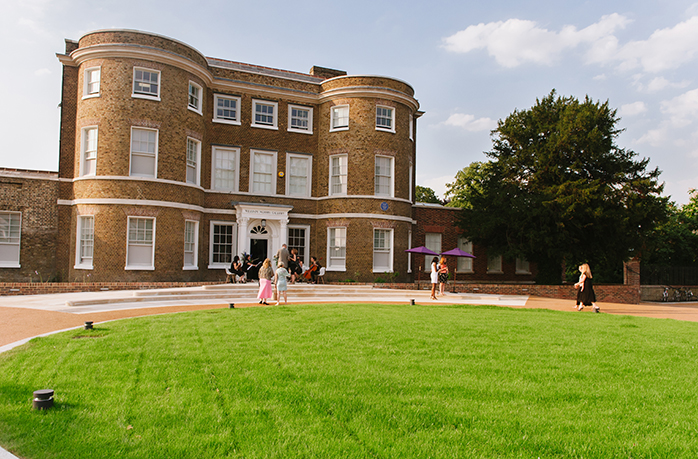London truly has something for every taste. Though on the surface it’s a big, fast-paced city, underneath all that, it definitely has a soft side with an interest in making the world a better place.
While you can easily spend a lot of time ticking off the many “must sees”, you can just as well experience more of the city’s alternative side to get a feel for how people live there and what makes the city tick. Whichever way you choose to do it, do it with care!
How to move around the city
It’s no exaggeration to say that it can be testing to get around London sometimes if you are trying to cross large distances. However, the transport system is pretty comprehensive and with a network of underground lines, overground lines, buses and trams (limited to far south London only), it will bring you anywhere you need to go.
The network is divided into six zones, and how many and which zones you travel in will affect how much you pay. If you’re staying in zones 1 or 2, it won’t take more than 30 minutes to get to most places of interest in the city. If staying further out of the centre, reckon on 45 minutes to an hour per journey.
Paper tickets are almost completely redundant for the London transport system nowadays. You can pay a deposit to get a blue Oyster card, a rechargeable card used to pay for any form of transport in the city, but that is also somewhat redundant now too, as you can use any bank card that has contactless capability to pay for your journeys.
Just make sure to touch it to the yellow card reader at the beginning and end of each journey, except on a bus, where you only need to touch in. Fares vary a lot depending on how many zones you pass through and what time of day it is, but the cheapest time to travel is outside of peak hours.
If using your own bank card, just make sure you won’t be charged extra fees for each transaction by your home bank.
What to see and do
London is known worldwide for many of its impressive historical sights such as Big Ben, Buckingham Palace, Trafalgar Square, the Tower of London and many of the world class museums (most of which have free entry!). Of course, there’s a reason these places are all well known, and checking them out for yourself is certainly a worthwhile endeavour, but there are plenty of less traditional sights in the city that are worth seeing.
Here’s a selection of places beyond the typical sights of London to visit, which will also give you a sense for the areas of the city beyond the centre.
The Sky Garden, on the 35th floor of a skyscraper in London’s financial district, known locally as the “walkie talkie” for its unusual shape, is the city’s highest public garden, and offers spectacular panoramic views of London below. Entry is free, but you must book tickets for a specific time slot online in advance.
The Hackney City Farm is a fully operational farm in the hip neighbourhood of Hackney in East London. Here you can see several kinds of farmyard animals up close, see how various fruits and vegetables are grown and visit the plastic free shop which sells their produce: you can’t get more local than that.
A stone’s throw away you’ll find Broadway Market, a Victorian street market where you’ll find over 70 shops, cafes and restaurants – everything from bakeries, green-grocers and fish mongers to pubs, vegetarian eateries and plenty of small specialty shops.

Hindu temple in Neasden, North London
The Neasden Temple (more properly known as the Shri Swaminarayan Mandir) is a Hindu temple noted for its unique architectural style as it was built entirely with traditional methods and materials in the 1990s, and was, at the time of completion, the largest Hindu temple outside of India. Though its location next to a busy road is not necessarily the most beautiful, it provides some interesting contrast to the calm of the interior.

The gallery exterior of William Morris Gallery © William Morris Gallery
The William Morris Gallery in Walthamstow is a museum dedicated to illustrator, designer, craftsman, writer and political activist, William Morris, whose family lived in this Georgian house built in the 1740s during the mid 19th century. On display are a large range of textiles, ceramics, furniture and paintings by Morris himself, which are accompanied by videos, texts and various interactive displays, making it an accessible and fun place for people of all ages.
Sustainable restaurants in London

The Gate in Islington © The Gate
The Gate in Islington is an upscale vegetarian restaurant that serves incredible breakfasts, brunches, dinner and special event menus with a focus on using locally sourced ingredients and making traditionally British meals vegetarian and vegan-friendly. The setting is modern and calm, with natural wood furnishings and plenty of plants.
Genesis in Shoreditch offers casual fast food that happens to be all vegan and mostly organic. Comfort food is the name of the game here, and the menu features most of the typical fast food items you can imagine, plus some more unusual things with Central American, Asian and South American influences. The many gluten free options are also clearly marked on their menu.
tibits in Mayfair is a fully vegetarian restaurant where you serve yourself from the bountiful buffet and then pay according to the weight of your plate. All dishes are marked clearly with potential allergens, and are regularly refilled. On Tuesdays, everything is vegan, otherwise around 80% of the options are vegan anyway. For takeaway, you can also bring your own box or loan a reBOX for £7 and return it when you’re done to avoid single-use packaging.

Deliciousness is the keyword at tibits ©tibits
Silo in Hackney Wick is a zero waste restaurant, a concept that came from Australia in 2011, where it was the world’s first ever zero waste restaurant. A huge emphasis is put on creating food with respect: for the environment, the way it’s produced and transported, and what it does for our bodies. They make their own bread, oat milk and butter on site, and as much as possible of the furnishings of the restaurant itself are made from recycled materials.
Where to stay: eco-friendly hotels in London
In a city as expansive as London, there are hotel options for a range of different budgets and requirements, but with an eye on sustainability, here are some of the best options in the coolest locations around the city.
The Zetter
The Zetter, in Clerkenwell, is right in the heart of one of London’s most historic neighbourhoods with many kinds of creative industry happening right there and a plethora of fantastic places to eat nearby. Its location also makes it one of the better places to stay if you prefer to explore by foot, as you can reach many parts of central London in 30 minutes or less.
What makes it sustainable? The building itself employs some of the most cutting edge technology to ensure its sustainability, including an energy loop system and their own borehole beneath the building for cooling. Additionally, all of their bathroom products are chosen specifically for being environmentally friendly, both in production and packaging.
Qbic Hotel
The Qbic Hotel is located right in the heart of multicultural Whitechapel, giving you easy access to the famous Brick Lane, and situating you a stone’s throw from the super-hip neighbourhood of Hackney, while still making it easy to get in and out of central London.
What makes it sustainable? The hotel is bent on being a genuine beacon of eco-friendliness for hotels everywhere with lots of small touches that might not seem like they have a big impact, but in fact make a big difference to the hotel’s footprint. For example, all the furniture is repurposed, rather than made new, you’re rewarded with a free drink at the bar if you choose not to have your room serviced after more than one night, and all rooms have smart showers that save water. They also offer bikes to explore the city to all their guests … for free!
Treehouse Hotel
The Treehouse Hotel in Marylebone is in a quiet but extremely central location for exploring the innermost parts of the city as well as the West End: it’s just five minutes walk from Oxford Circus.
What makes it sustainable? With furnishings made of reclaimed wood, and their own composting system for organic waste, this hotel has made several conscious decisions in the design and running of their business to ensure it is eco-friendly in various ways. They also have drastically reduced single use plastics compared to most other hotels and only use locally sourced toiletries in their bathrooms.






